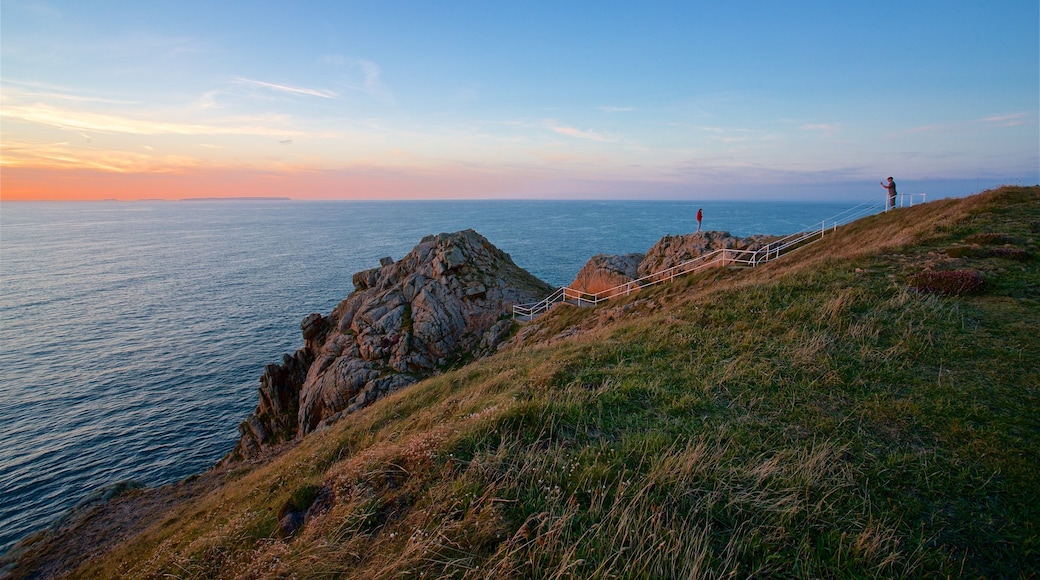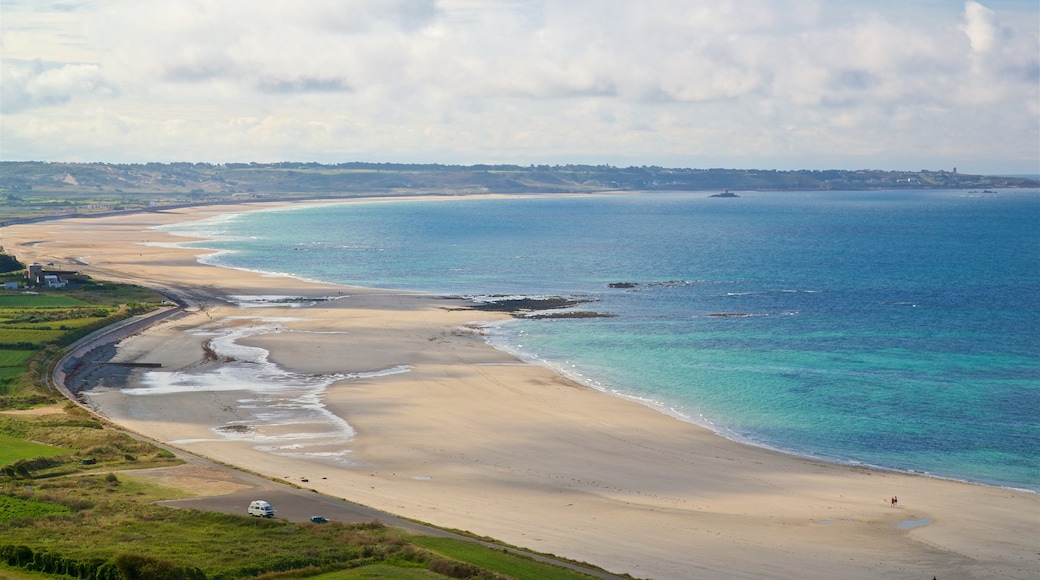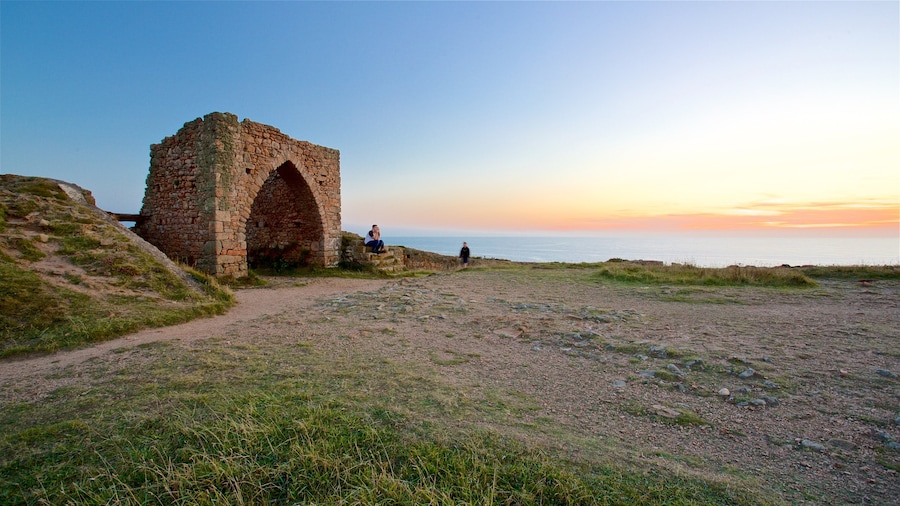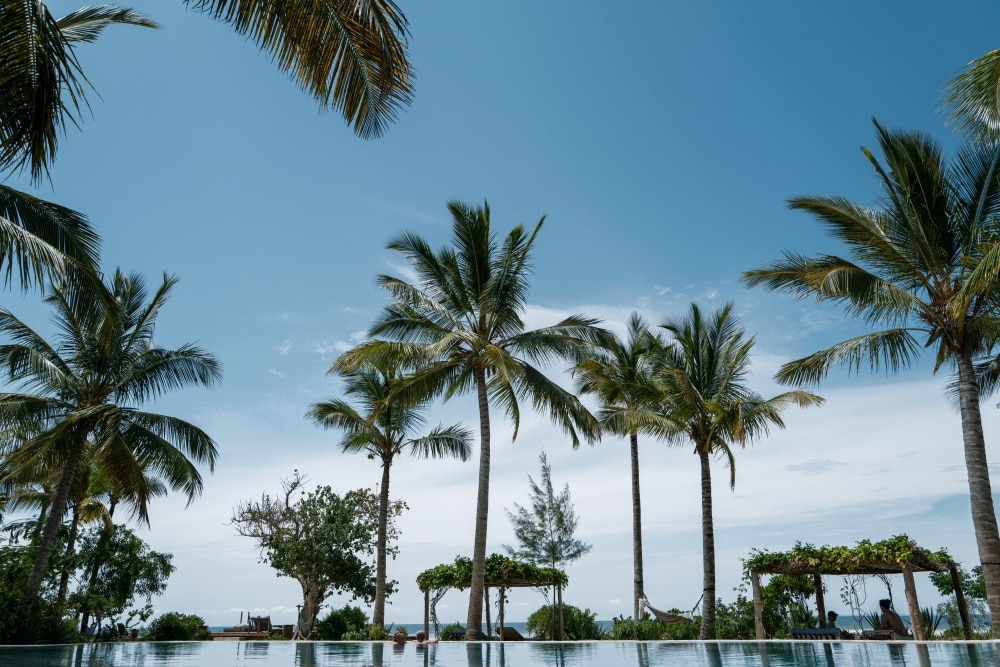Barracks and memorials are among the reminders of war scattered across the parish of the Grey Bellies, whose churches and beaches complete the picture.
Green cliffs, enchanting hamlets and sandy beaches shape the scenic terrain of St. Ouen. Far from the busy southern coastal towns, the parish has a serene, old-world ambiance with many historic vestiges and natural formations. Trace the history and lineage of this fascinating part of the island through its monuments and ramparts.
Among the most striking of the parish’s many bays is La Greve de Lecq, a sandy strip fringed by intriguing structures. Stroll along the Greve de Lecq Pier on the western end and take photos of the verdant bluffs framing the beach. Towering over the other side of the beach is the 18th-century Catel Fort, a popular wedding venue initially built to defend the area from French invasion.
As you move inland, stop at one of the cafés and restaurants for coffee or seafood. Reach the Greve de Lecq Barracks, where you can see the rooms of former soldiers and officers as well as the prison cells for drunk or disobedient soldiers.
Venture into the main village area of St. Ouen to see the Parish Hall, recognizable by the redbrick clock tower and bell enclosure. Inspect the war memorial in the forecourt area.
Travel to the northwestern tip of the island for the surviving ruins of the 14th-century Grosnez Castle. Use its arch as a photo frame for sea views. For a change of pace, head to the adjacent Les Landes Race Course in summer to watch the horses run.
Note that the locals are known as Grey Bellies, because their ancestors traditionally wore undyed sweaters, as opposed to the colored ones of neighboring parishes.
The area fills the northwestern promontory of Jersey, including the northern half of Les Mielles Nature Reserve. Its center is a 10-minute drive northwest from Jersey Airport. See some of the surrounding sights, such as Valley Adventure Centre, La Moye Golf Club and the Jersey War Tunnels.
St. Ouen brings military history to life in a serene setting.













